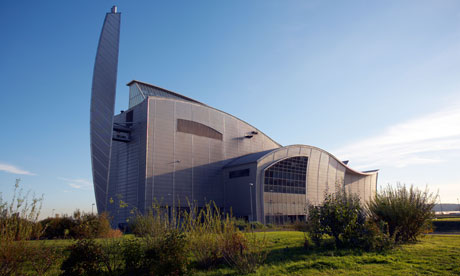They look like instant coffee granules, but they are in fact sewage flakes – a highly combustible new renewable form of fuel that burns like woodchip and is being used for the first time to generate electricity for Britain’s largest water and sewerage company.
Thames Water has begun producing the flakes by drying sludge – the solids found in sewage – in a purpose-built machine at sewage works in Slough, Berkshire. In a not-so-green move, the company then takes the flakes by lorry to Crossness sewage works in Bexley, south-east London, where they are burnt off to generate electricity.

The company estimates that 16% of its electricity needs will be covered in the current financial year by so-called poo power – enough to run about 40,000 average family homes – from a total energy requirement of 1,300 gigawatt hours.
Until now, the sludge dryer had been used to reduce waste simply to get rid of it more conveniently. The dryer promises to reduce the firm’s carbon emissions by more than 500 tonnes a year, as well as bringing up to £300,000 a year of operational cost benefits.
Rupert Kruger, Thames Water’s head of innovation, said: “This is the first time in Britain that a waste dryer has been used to create ready-to-burn fuel from sewage sludge, rather than simply being used as a waste-reducer. This innovative approach demonstrates our clear intent to help move Britain towards becoming a low-carbon economy by unlocking every ounce of renewable energy potential from waste.”
Five tonnes a day of sewage sludge – 20% of the solids left over from the treatment process at the Slough works – are being put through the new dryer, which works by heating the sludge to around 180C and driving off the water using enclosed heated rotating paddles.
A further 20 sewage works, including Slough, generate electricity by burning biomethane gas from sewage, a process know as combined heat and power.
 Follow
Follow